This article was medically reviewed by Luba Lee, FNP-BC, MS. Luba Lee, FNP-BC is a Board-Certified Family Nurse Practitioner (FNP) and educator in Tennessee with over a decade of clinical experience. Luba has certifications in Pediatric Advanced Life Support (PALS), Emergency Medicine, Advanced Cardiac Life Support (ACLS), Team Building, and Critical Care Nursing. She received her Master of Science in Nursing (MSN) from the University of Tennessee in 2006.
There are 14 references cited in this article, which can be found at the bottom of the page.
wikiHow marks an article as reader-approved once it receives enough positive feedback. In this case, 100% of readers who voted found the article helpful, earning it our reader-approved status.
This article has been viewed 224,669 times.
Open wounds on your face can be frustrating because you can’t hide them as easily as on other parts of your body. These wounds may be from acne, cold sores, or an abrasion. To heal the wound quickly, keep it clean, keep it moist, and try not to irritate it.
Steps
Tending to Your Wound
-
1Wash your hands. Before touching or treating the wounds on your face, make sure you wash your hands. Use warm water and antibacterial soap. Dry them with a clean cloth. Don’t touch anything after washing your hands because that could contaminate them.[1]
- Touching your open wounds on your face with dirty hands can transfer dirt and bacteria to the wound, which can slow the healing process.
-
2Clean the wound. Wash the wound on your face with warm water. Avoid using hot water because this may cause the wound to start bleeding. Don’t use soap because that could cause the wound to be irritated. Remove any debris or dirt from the wound.[2]
- Washing the wound can also remove any bacteria that could lead to infection.
Advertisement -
3Apply ointment. Keeping the wound moist helps speed up the healing process. You can use petroleum jelly or antibiotic ointment. You can place the ointment on the wound with clean fingers or with a cotton swab.[3]
-
4Cover the wound with a bandage. Open wounds are very vulnerable. They are exposed to dirt, debris, and contaminants that could lead to infection. To help protect the open wounds on your face and make sure they heal faster, place a bandage over them.[4]
- Try to find a bandage that is breathable, like gauze. This helps air still reach the wound, which will make it heal faster than if it gets no air.
- A bandage can help keep the wound moist so that it can heal.
-
5Keep the skin around the wound clean. To protect the wound and prevent infection, keep the skin around the open wound clean. You can clean that part of your face with either a face wash or antibacterial soap.[5]
- You should also dry that area well after you are finished and keep the skin dry.
Seeking Medical Attention
-
1Watch for signs of infection. Open wounds are vulnerable to infection. Monitor your wound for infection. Symptoms of infection include redness, swelling, or warmth around the wound. Any pus or colored discharge indicates infection.[6]
- You may also develop a fever, chills, or fatigue if the infection worsens or spreads. Seek medical attention if this happens.
- An uncomplicated infection on your face can sometimes turn into facial cellulitis. This is an infection of deeper layers of skin and underlying tissue, and it can cause serious complications if left untreated. Watch for redness, pain and swelling, and yellow or green pus. [7]
-
2See a doctor if you have a condition. Some people heal more slowly or are at risk of complications from infections, including those who are obese, diabetic, have poor blood flow due to arteriosclerosis, smoke, use alcohol heavily, or are under stress.[8]
- See a doctor about your facial wound if you fall into one of these categories. She can advise you on the best plan of treatment.
-
3Go to the doctor for deep facial wounds. Only minor wounds should be treated at home. See a doctor if you have deep wounds with rough or uneven edges, if you can’t bring the edges together, or if you can’t properly clean the wound. You may need stitches to pull the skin back together, or you may be at risk for infection.[9]
- If the wound won’t stop bleeding, you should also go to the doctor because this indicates it is a more serious wound.
- See a doctor, too, if the area around the wound becomes very swollen, red, and tender to the touch. You may need an oral antibiotic.
-
4Take antiviral drugs for cold sores. If the open wound on your face is caused by a cold sore, your doctor can prescribe antivirals to help heal the cold sore. These drugs may be in a pill or cream form. Pills generally heal cold sores faster than creams.[10]
- If you don’t want to go see a doctor, you can buy over-the-counter creams that will heal the cold sore.
Promoting a Healing Environment
-
1Remove any pressure from the affected area. Some facial wounds are caused by the pressure of something rubbing on the delicate skin of the face. This may be due to an oxygen tube or even eyeglasses. If this is the cause of your facial wound, remove the source of the wound for periods of time, especially while it is healing.[11]
- If you are not sure how to change the way you wear your eyeglasses or oxygen tubes, talk to your doctor.
-
2Increase your protein. Diet can affect your body’s natural healing properties. To help make sure your face wounds are healing as quickly as possible, increase your protein intake. Try adding meats, dairy, whole grains, legumes, and vegetables to your meals.[12]
- Lean meats are a great source of protein. Try chicken breast, fish, pork, eggs, or lean beef.
- Dairy products also contain a lot of protein. Greek yogurt, cottage cheese, and lowfat cheese can make good snacks to increase your protein.
- Whole grains, like quinoa and bulgur, contain a lot of protein, as do black beans, lentils, soy beans, red beans, or kidney beans. Try green vegetables for protein, such as spinach or broccoli.
- Avoid junk food that increases inflammation and hinders healing.
-
3Use supplements. One way to help sores heal quickly is to improve your immune system with dietary supplements. This includes vitamins like vitamins C, B, D, and E. Fish oil and zinc are also help to promote healing and to stop infections of the skin.
-
4Avoid picking the scabs. When your open wounds start to scab over, don’t pick at the scabs. Picking at them can slow the healing process and lead to scarring. Leave the scar alone.[13]
- Continue adding petroleum jelly to the wound to help keep the scab moist.
-
5Avoid harsh solutions on facial wounds. When treating wounds on your face, don’t try to clean them with harsh solutions. This can damage the injured tissue or irritate the wound, which will slow the healing process.[14]
- Don’t use antibacterial solutions, hydrogen peroxide, or iodine solutions.
-
6Refrain from moving your facial muscles too much. As your wound is healing, try to limit how much you use the muscles around the wound. If you move your muscles, you could irritate and pull at the wound, which can slow the healing process.[15]
- Try not to smile, chew, or talk with exaggerated movements. Take it easy as your wound heals.
-
7Use an ice pack. If your open wound has swelling around it, try using an ice pack. Take a cold compress or ice wrapped in a towel and place it on the wound for around 10 to 20 minutes. You can do this multiple times a day.[16]
- Never place ice directly on the wounds. This could cause your face to burn.
-
8Avoid heat on the wound. To reduce irritation and swelling around your wound, you should avoid applying heat to the area. Do not wash your face in hot water or take a hot shower. You also shouldn’t use heating pads, eat hot or spicy foods, or drink hot fluids.[17]
Healing Wounds Naturally
-
1
-
2Try aloe vera. Aloe vera can be used to treat wounds because of its healing properties. Try an ointment that containing aloe vera. You can also cut a piece of an aloe leaf from the plant. Slide the gel-like inside of the leaf across your wound.[20]
-
3Apply tea tree oil. Tea tree oil is an essential oil that has antimicrobial and antibacterial properties. To use it for your wound, place two drops of oil in a cup of warm water. Place a cotton ball in the solution and then dab it on the wound.[21]
- Because it is so strong, it needs to be diluted with water.
- You may want to test the tea tree oil on a small patch of skin before placing it on your wound. Some people are sensitive to tea tree oil.
-
4Use essential oils. Different essential oils may help heal your wound. Mix a few drops of one of the essential oils with a carrier oil, like olive or almond oil.
References
- ↑ https://www.advancedtissue.com/facial-wounds-improving-healing-times-for-cuts-and-scars/
- ↑ http://www.aafp.org/afp/2002/0715/p315.html
- ↑ http://woundcaresociety.org/how-to-make-a-wound-heal-faster-on-your-face
- ↑ http://woundcaresociety.org/how-to-make-a-wound-heal-faster-on-your-face
- ↑ http://www.webmd.com/skin-problems-and-treatments/tc/pressure-sores-topic-overview#2
- ↑ https://www.advancedtissue.com/facial-wounds-improving-healing-times-for-cuts-and-scars/
- ↑ http://www.nhs.uk/conditions/Cellulitis/Pages/Introduction.aspx
- ↑ https://medlineplus.gov/ency/patientinstructions/000741.htm
- ↑ http://woundcaresociety.org/how-to-make-a-wound-heal-faster-on-your-face
- ↑ http://www.mayoclinic.org/diseases-conditions/cold-sore/basics/treatment/con-20021310
- ↑ http://www.webmd.com/skin-problems-and-treatments/tc/pressure-sores-topic-overview#2
- ↑ https://my.clevelandclinic.org/health/articles/nutrition-guidelines-to-improve-wound-healing
- ↑ https://medlineplus.gov/ency/patientinstructions/000741.htm
- ↑ http://www.aafp.org/afp/2002/0715/p315.html
- ↑ https://www.advancedtissue.com/facial-wounds-improving-healing-times-for-cuts-and-scars/
- ↑ https://www.advancedtissue.com/facial-wounds-improving-healing-times-for-cuts-and-scars/
- ↑ https://www.advancedtissue.com/facial-wounds-improving-healing-times-for-cuts-and-scars/
- ↑ https://www.ncbi.nlm.nih.gov/pmc/articles/PMC2995283/
- ↑ http://www.motherearthnews.com/natural-health/wound-care-zbcz1510
- ↑ http://www.motherearthnews.com/natural-health/wound-care-zbcz1510
- ↑ https://www.ncbi.nlm.nih.gov/pmc/articles/PMC1360273/
- ↑ https://www.ncbi.nlm.nih.gov/pmc/articles/PMC2839398/
- ↑ https://www.ncbi.nlm.nih.gov/pubmed/20359267
- ↑ https://www.ncbi.nlm.nih.gov/pubmed/17562569
About This Article
To quickly heal an open sore on your face, make sure to clean it once a day and treat it with an ointment to keep the area moist. You’ll also need to keep the area covered to prevent the wound from getting infected. Start by washing your hands with warm water and antibacterial soap. Then, use your clean hands to wash the sore with warm water only, since soap can irritate the wound. Once the wound is clean, apply petroleum jelly or an antibiotic ointment over the sore, which will help speed up the healing process. Finally, cover the wound with a bandage to keep out any germs and debris that can lead to an infection. For more advice from our Medical co-author, like how to tell when you should see a doctor, keep reading.


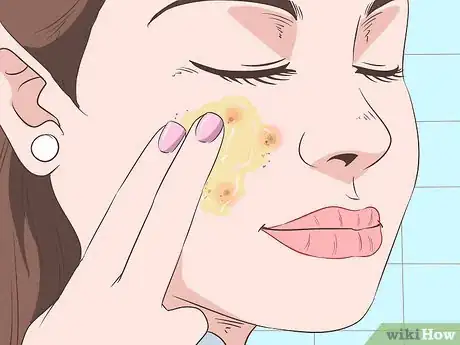





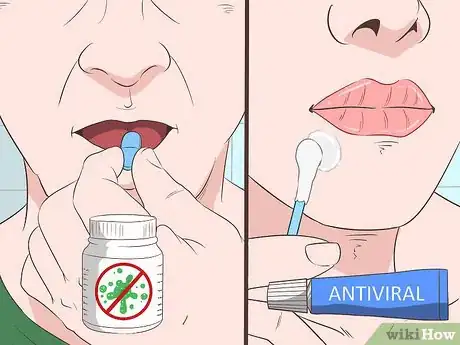


















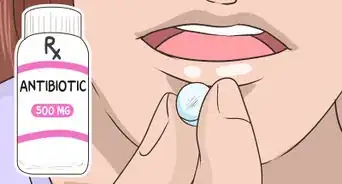
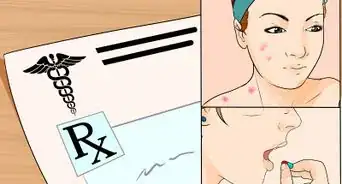


















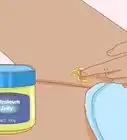



































Medical Disclaimer
The content of this article is not intended to be a substitute for professional medical advice, examination, diagnosis, or treatment. You should always contact your doctor or other qualified healthcare professional before starting, changing, or stopping any kind of health treatment.
Read More...